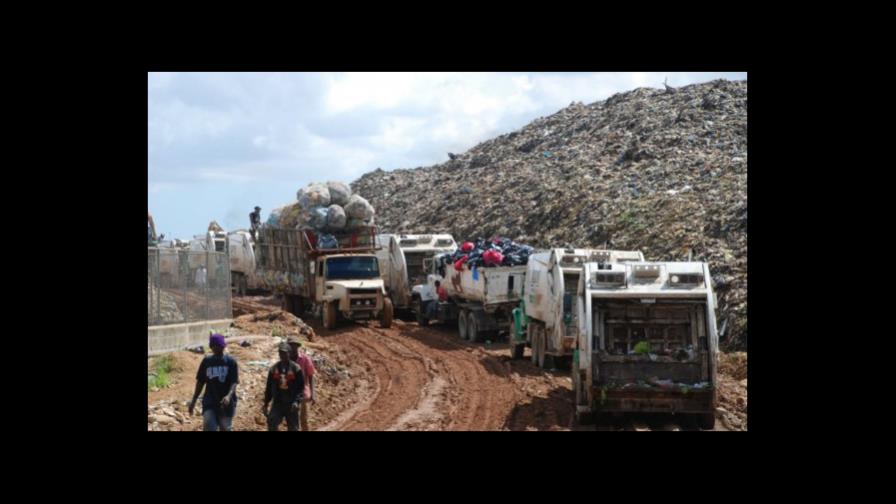Why do projects at Duquesa fail?
The lack of money and political will are the principle obstacles cited by experts

SD. Offers to convert the Duquesa landfill or garbage dump into a sanitary landfill capable of recycling, producing clean energy, and organic fertilizer have been made by many, but until now, it has been impossible to bring them to fruition. Since the end of 2012, the media has reported on the intentions of three foreign investors to use the refuse that reaches this dump site.
The first of these proposals arrived on 17 December 2012, when the Minister of Tourism reported on the willingness of Hindu businessmen to buy the garbage from Duquesa, "to export part of it and convert the other part into fertilizer." In July of last year, a United States company, Westinghouse Plasma, showed interest in handling the dumping site, and later Write Technology, made the same offer, with the aim of "solving" the problem of the solid wastes in Greater Santo Domingo. Nevertheless, since then, nothing has been learned of the plans, in spite of the fact that the dump is going through one of its worst crisis.
The private project that "went down the road" the furthest with the intention of using the refuse that reaches Duquesa, came in 2009, when the Lajun Corporation-in charge of the dump site since last July-subcontracted to the Recicladora de Plasticos Dominicana (Repsa) the compacting of the plastics, cardboards and papers that they extract and to Bionersis, to produce methane by "degassing" the garbage dump.
After nearly four years of operation, the project does not show any progress. Repsa is active, but only processes around 1% of the reusable refuse which Duquesa receives, and the gas extraction company is not longer in the dump site, although the City Council of North Santo Domingo, in charge of the site, says that they continue to extract gas.
Duquesa is the largest garbage site in the country, with a daily reception which is close to 4,000 tons of garbage which is produces in the National District, the municipalities of East Santo Domingo, North Santo Domingo, West Santo Domingo, Los Alcarrizos and Pedro Brand, and the municipal districts of Palmarejo-Villa Linda, Pantoja, and La Guayiga.
This amount-in the judgment of people who know the issue-is sufficient to feed any electricity generation project or other that might be considered in the areas of recycling. Then, one must ask, why do these projects not reach fruition?
Reasons
The reality is complex. Duquesa is not an isolated case, but rather it is part of a problem-country for the handling and treatment of garbage.
In this the director of the Commonwealth of Greater Santo Domingo, Onofre Rojas; The coordinator of solid wastes of the Environmental Ministry and the liaison of the Executive Power with the city councils, Domingo Contreras, and the Sanitation Engineer, Roberto Castillo Tio.
Rojas attributes it, first to the lack of depth in the study on the problem and in second place, the absence of political will. A political will, in his understanding, which believes in the rules of the game both for the public sector as well as the private, that makes the citizens fulfill their responsibilities with the rubbish they produce and that assigns the funds to implement the plans.
The other powerful reason which Contreras sees as the failure of the projects for Duquesa, is money. "All of the financial schemes that we have seen until now in the places where they have been instituted have a common factor which is the payment per ton of garbage deposited or in final deposit, which is the landfill, or in a recycling plant," says Contreras.
The former secretary general of the City Council of the National District explains that in the country and in the particular case of Greater Santo Domingo, they have established an inverse process to the world scheme with respect to the garbage cycle. The standard is that the greatest cost is for the final disposition, but here they pay more for collection and transportation. ‘In all parts of the world where the garbage is handled responsibly the final destination is worth more than the collection and the transportation," stresses Contreras and he cites, for example, that in countries in Central America, similar to the Dominican Republic, the average payment to the final destination is US$22 per ton, while here the municipality which pays the most is the National District which pays just US$4.00 per ton.
Precisely because of the reduced pay was one of the reasons outlined by Max Da Silva, the former operations manager of the Lajun Corporation at the dump site, as one of the obstacles for an efficient operation of the site. Lajun was pushed aside from the administration of Duquesa in July of last year, as the city government rescinded the contract, alleging the lack of compliance. Money is an element that for the engineer, Castillo Tió, as he says that "the fundamental issue is that there is no self-sustaining proposal" in the case of Duquesa. He stresses that the City Council of North Santo Domingo-which administers the dump site-has no economic responsibility for resolving the problem
In fact, recently the mayor of the municipality revealed that in order to transform Duquesa to a sanitary landfill, they would need US$400 million, a sum which he felt neither the cities nor the government are in a condition to provide.
The private sector?
In these conditions, it is normal that the private sector should enter the ring. And in fact, it is expected that this comes about. Since the city council of North Santo Domingo has a call for a tender pending in order to contract the privatization of the administration.
Nevertheless, some of the investors are cautious at the moment of looking at Duquesa. Until the end of last year, the National Energy Commission (CNE) had five projects listed-under provisional concessions-to generate energy based on extraction from garbage, but none looked at Duquesa.
The projects that are under study by the CNE and who want to install themselves in East Santo Domingo (GSE Dominicana); in La Romana (Turtle Company Business); in San Francisco de Macoris (Interscope); in San Pedro de Macoris (Prenbi S.R. L.) and in Santiago de los Caballeros (Green Wheels).
"With the mess there is there, nobody wants to invest," commented the representative of a company interested in the area, but asked that his name not be revealed.
It is just that, besides negotiating with the city council responsible for the dump, the investors will have to give accounts to the other eight mayors that dump their garbage there.
The companies that are looking to enter the business of generating energy with garbage do not talk about the issue of Duquesa openly. When they are contacted, the representatives say that they are not authorized by their home offices, or that they do not want publicity since they are in the process of obtaining permits from the CNE. They let it be known that one of the reasons why they "run" from Duquesa is the fear of future problems of judicial security. And it is that the generation of energy by taking advantage of garbage requires large investments for its recovery and therefore long contracts.

 Diario Libre
Diario Libre
 Diario Libre
Diario Libre